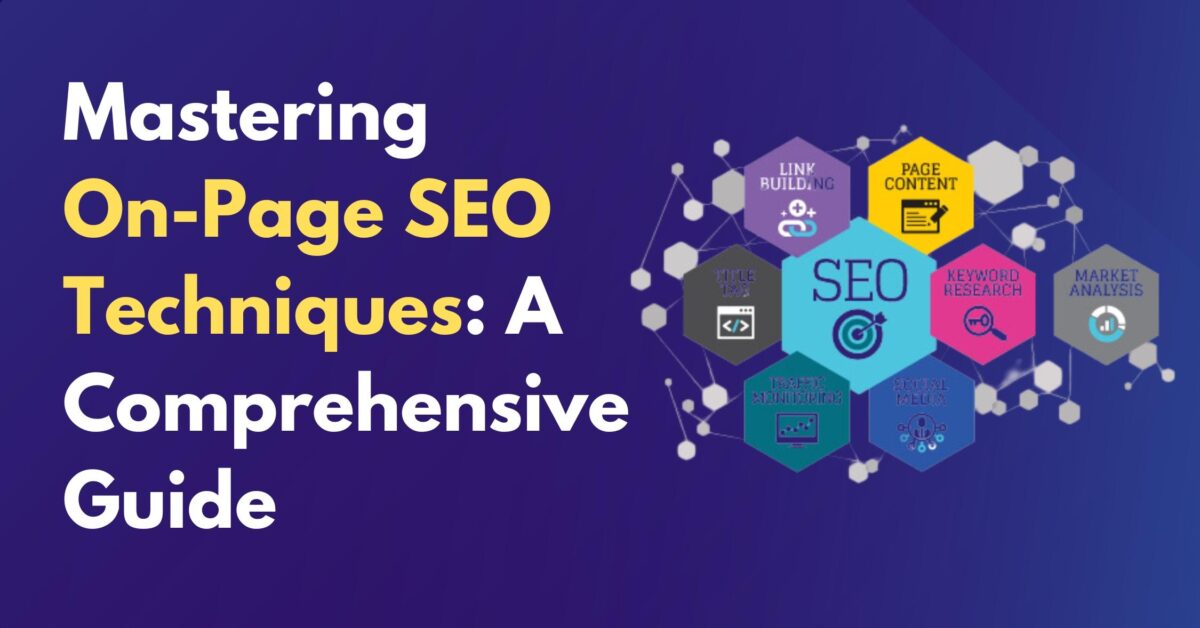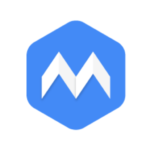Mastering On-Page SEO Techniques: A Comprehensive Guide
On-page SEO is one of the most important processes you can use to achieve higher rankings in a search engine’s organic results and run successful SEO campaigns.
All SEO procedures revolve around a website, and if it isn’t properly optimized for both users and search engines, your chances of receiving traffic from search engines are significantly reduced.
This article will teach you all you need to know about on-page SEO techniques. Use these guidelines each time you publish new content to raise your search engine rankings.
On-Page SEO Definition
The technique of optimizing individual web pages to get greater search engine rankings is known as on-page SEO. The scope of on-page SEO goes beyond content to include elements like schema and meta tags. Technical SEO and off-page SEO are hampered by on-page SEO. On-page SEO consists of content components, site architecture elements, and HTML elements.
Why is On-Page SEO Important?
On-page SEO provides several signals to search engines to assist them in comprehending the subject matter of your content.
Search engines work to link web pages to the keywords and search queries users provide in the search box during the indexing and ranking procedures.
You can direct them toward the keywords you want your pages to rank for by utilizing on-page SEO components.
Also Read: How Important Is SEO Services In Digital Marketing?
On-Page SEO Techniques for Higher Ranking
The essential On-page SEO factors for higher ranking are:
Publish High-Quality Content
The page content is the heart of on-page SEO techniques. It tells both search engines and readers what your website and business are all about.
The selection of pertinent keywords and themes is the first step in creating high-quality content. Investigate keywords by entering phrases into Google and observing the websites and web pages of competitors that appear.
The page content is the center of the on-page SEO process and gives you the chance to provide value to Google and your site users. Spend enough time and money creating and optimizing the page content as it is the foundation for all other on-page SEO components.
The websites that appear at the top of the search results will soon have lower ranks if they fail to produce material that meets the search intent.
So, before even thinking about on-page SEO, make sure that the content you create is what a Google searcher wants.
Optimize Page Title and Meta Description
Your website’s pages should have a distinct, informative title. Each page’s head tag is nested beneath a title tag, which contains the page’s title. Each page needs a special title that will let users and search engines alike know what the page is about.
It’s your opportunity to advertise your page and convince users to click your link and visit your website rather than selecting one of the other links.
It should be noted that Google does not always show the custom meta description, but many times they use an automated description if they believe it is more useful for the searcher. The meta description does not directly affect rankings. It’s important for ranking well on the SERP and generating more clicks, thus it’s included in this on-page SEO checklist.
Heading and Content Formatting
A page has to be formatted correctly. To identify headers on your website, utilize header tags. H1 is the name of the primary header tag, which is commonly used for the page title.
Additionally, we have subheadings that range from H2 to H6. Every page on your website has to have its own H1 tag, which is often made from the page title. The major keyword or phrase for which you are optimizing your website should appear in the H1 element.
Avoid using heading tags to mark non-heading elements, such as navigational buttons and phone numbers. Using heading tags to set the context and introduce readers to the next topic.
SEO Image and Other Multimedia Elements
Images are vital for presenting purposes. They make a page more fascinating and simpler to grasp.
Images help to break the monotony, especially, when you writing long-form content. Alt text descriptions help the search engine bots understand your image better. Alt text should provide context and should read naturally to people.
When it comes to making your website load slowly, images are also the main offender. You have to compress images to make sure they load fast.
URL Optimization
A URL is the address or location of a certain piece of online information. Your URL’s name and structure may affect how many people click on it. The name, structure, and length of a URL are the three components that makeup URL optimization. It’s crucial to optimize your URLs for the best SEO results. It is divided into two sections. URL structure and optimization are the first and second components, respectively. “Both readers and search engines should find it easy to understand your page URLs. They are crucial for maintaining the consistency of your site structure when you develop internal pages such as blog articles and subpages.
Internal links
The act of hyperlinking to other useful pages on your website is known as internal linking. Internal links are crucial for on-page SEO because they direct visitors to other pages on your website, retaining them there for a longer period of time and signaling to Google that your site is worthwhile and beneficial. Additionally, Google has more time to scan and index your website pages the longer visitors stay on your site. This finally helps Google absorb more information about your website and maybe rank it higher on the search engine results pages.
External Links
An external link is a link linking to a page outside your website i.e. on a different domain. The link is a backlink for the website that gets it and an external link for the website that links out.
We know that backlinks are important for SEO but what about external links?
External links to relevant pages aid Google in determining the subject of your page. It also makes Google aware that your page is a reliable source of knowledge.
Adding external links to your content will not directly help you with SEO, it’s not an on-page SEO ranking factor but it can help you indirectly.
You may email them and let them know about it by using external links to connect to other websites. The fact that you have connected to them will make webmasters happy, and this is a terrific approach to strike up a dialogue.
Conclusion
On-page SEO Techniques are more important than off-page SEO, considering you have complete control over the process, whereas that is not always the case with off-page SEO. Metaloop Marketing provides the best on-page SEO service in Gujarat.



Write a Comment